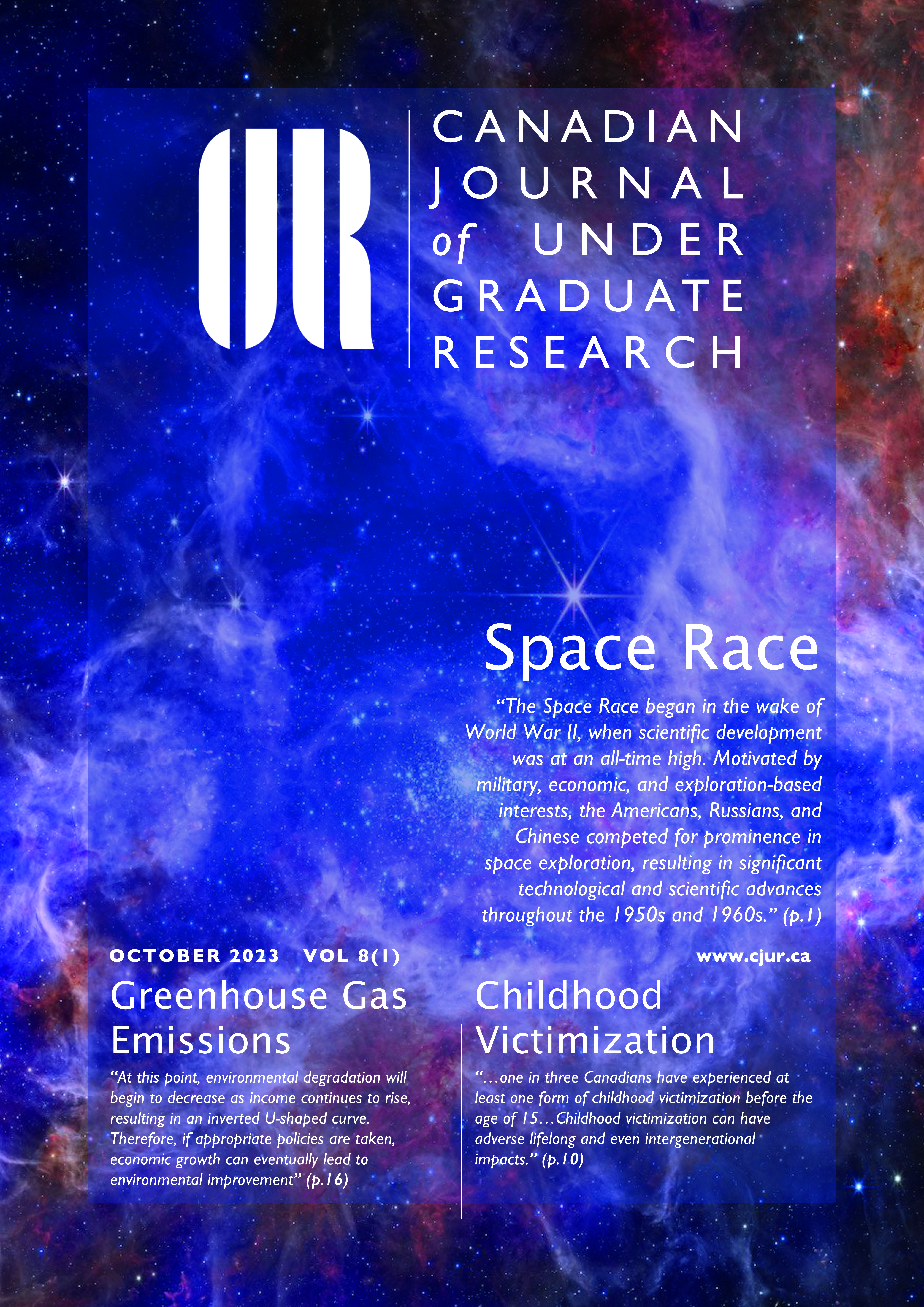Revisiting the Environmental Kuznets Curve Model: Greenhouse Gas Emissions within Canada
Abstract
The change in human behavior from living on the land to living off of the land's resources through industrialization, increasing living standards, and rising incomes have been marked by rapidly increasing emissions of greenhouse gasses (GHGs) into the earth’s atmosphere. The Environmental Kuznets curve (EKC) hypothesis posits that as income grows, environmental degradation increases until an economy reaches a tipping point, beyond which environmental degradation will decline as income increases (Stern, 2004). This study empirically examines the validity of the EKC hypothesis as applied to Canada’s provinces and territories from 1990-2020, using data on GHG emissions and GDP per capita as environmental degradation and income indicators. Overall, the results of this study support the EKC hypothesis at the Canadian level and confirm the results found by previous studies. Confirmation of the EKC indicates that increasing economic growth in Canada’s provinces and territories is unlikely to lead to higher greenhouse gas emissions and instead is likely to result in decreasing GHG emissions.
Downloads
Published
Issue
Section
License
Authors who publish with this journal agree to the following terms:
- Authors retain copyright and grant the journal right of first publication with the work simultaneously licensed under a Creative Commons Attribution License that allows others to share the work with an acknowledgement of the work's authorship and initial publication in this journal.
- Authors are able to enter into separate, additional contractual arrangements for the non-exclusive distribution of the journal's published version of the work (e.g., post it to an institutional repository or publish it in a book), with an acknowledgement of its initial publication in this journal.
- Authors are permitted and encouraged to post their work online (e.g., in institutional repositories or on their website) prior to and during the submission process, as it can lead to productive exchanges, as well as earlier and greater citation of published work (See The Effect of Open Access).

